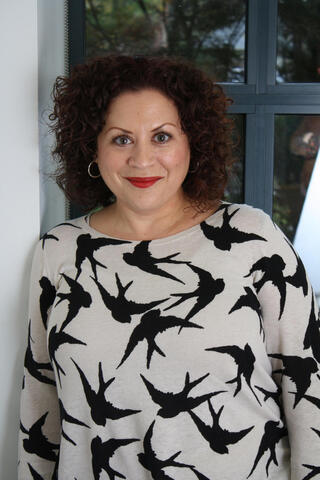Experiences of anxiety, fear, or sadness are normal reactions to difficult events or life challenges. In some cases, however, such feelings remain long after their initial cause has passed. When persistent sadness or loss of interest, excessive fear or anxiety, or worry that is hard to control are having a negative impact on our lives, they can be a sign of a serious condition, such as an anxiety disorder or depression. These conditions can impair our ability to go about our daily lives, achieve our goals and have successful relationships.
CBT is a problem-focused, skills-based treatment that provides a framework for understanding what's keeping problems going and teaches practical tools and strategies for breaking unhelpful patterns of thinking and acting. CBT has been the subject of extensive research study over the past five decades, which has provided strong evidence for its effectiveness in treating anxiety and depression.
How does CBT help?
CBT typically focuses on difficulties in the here-and-now, rather than on exploring root causes in the distant past. You and your therapist will begin by evaluating the problem and developing a shared understanding of the ways circumstances, thoughts, emotions and behaviors interact to produce problematic outcomes. You and your therapist will then collaborate in problem-solving and experimenting with changes in how you approach your thoughts and actions. You will learn to treat a thought not as fact but as a hypothesis and to evaluate whether real-world evidence suggests it is accurate; you will notice how the thought is affecting you and whether it is helping you be the person you want to be. In terms of your actions, you will learn how certain coping strategies and behaviors that provide emotional relief in the moment can end up reinforcing ongoing problems, and practice engaging in alternative behaviors that move you towards the life you want.
How long does CBT take?
Throughout treatment, you and your therapist will measure progress to ensure that treatment is being effective and helping you reach your goals. While everyone differs and the number of treatment sessions varies based on your goals and the treatment plan you will develop with your therapist, many problems can be treated in 12- to 20-weekly therapy sessions.
Conditions CBT Can Treat in Individuals
At its core, anyone can benefit from CBT because it teaches you new ways of being aware of your thoughts and actions and their consequences. In addition, research has shown CBT to be especially effective for the following conditions:
- Agoraphobia: persistent avoidance of situations that could trigger panic attacks.
- Body Dysmorphic Disorder: a preoccupation with one or more perceived defects or flaws in physical appearance, such as weight. Although others don't notice these perceived flaws, you feel driven to perform excessive, repetitive behaviors or mental acts in response to appearance concerns.
- Depression: persistent depression can interfere significantly with your ability to function.
- Generalized Anxiety Disorder: excessive worrying. Other symptoms include muscle tension, restlessness, irritability, difficulty concentrating and the feeling of being keyed up or on edge.
- Hair-pulling/Trichotillomania: recurrent pulling out of hair, resulting in noticeable bald patches.
- Health Anxiety: excessive preoccupation with having or acquiring a serious illness. Although somatic symptoms are not present or are mild, you experience anxiety about health and repeatedly check for signs of illness, or exhibits maladaptive avoidance.
- Obsessive-Compulsive Disorder: recurrent, distressing thoughts or ritualized behavior, such as excessive hand washing.
- Panic Attack: a sudden rush of intense fear or anxiety. Physical symptoms include rapid heartbeat, dizziness, difficulty breathing and/or sweating.
- Panic Disorder: frequent occurrence of unexpected panic attacks and excessive worry about having panic attacks.
- Specific Phobia: the exaggerated fear of a specific situation or objects. Even if you recognize that a fear is excessive, you still avoid the situation or object.
- Social Phobia: excessive fear of being observed by, criticized or embarrassed in front of others. You may exhibit excessive dread and try to avoid situations such as public speaking, eating in front of others and going to parties.
- Skin-picking/Excoriation: recurrent skin picking that results in skin lesions
The Role of Parents During CBT for Children & Adolescents
CBT with children and adolescents will always involve the family, who are a key resource to support change. Parents will be supported in becoming "emotion coaches" for their children in a developmentally appropriate way that aims to promote their child's independent, effective use of coping skills.
How to Get Started with CBT
First, we will need a complete assessment of whatever challenges you may be facing. You will participate in a detailed, comprehensive interview about past and present problems with depression, anxiety, panic and related conditions. We also ask you to fill out questionnaires to determine exactly what triggers any problems and identify the severity of symptoms.
This results in an explicit, understandable and flexible treatment plan that accurately reflects your needs as an individual. We also encourage you to undergo a physical examination with your primary care doctor.
To schedule a consultation, please call 847-733-4300, ext. 228 or email cbt@family-institute.org.





































